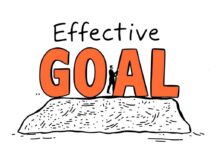How to build a better relationship with time

To truly maximize your productivity, establish a daily routine that aligns with your natural pace. Start by identifying the hours when you are most alert and focused. Allocate challenging tasks during these peak periods, while reserving less demanding activities for times when your energy dips. This approach not only boosts performance but also significantly contributes to stress reduction.
Consider implementing the Pomodoro Technique: work for 25 minutes, then take a 5-minute break. This method enhances concentration and helps maintain balance throughout the day. By allowing yourself short intervals of rest, you can recharge and return to tasks with renewed vigor, ultimately increasing your output without compromising well-being.
Regularly assess your priorities and eliminate non-essential commitments that drain your time. Use tools like calendars or task management apps to visualize your obligations and streamline workflows. A clear overview minimizes overwhelm and allows you to focus on what truly matters, fostering a sense of accomplishment and control over your day.
Identifying Your Priorities
List your top three priorities daily. This simple exercise enhances focus and clarifies what truly matters, leading to reduced stress. Each morning, identify tasks that align with your core objectives and contribute meaningfully to your goals.
To maintain balance, categorize tasks into four quadrants: urgent and important, important but not urgent, urgent but not important, neither urgent nor important. This framework allows for a strategic approach to handling responsibilities while fostering a sense of presence.
Regularly reassess these priorities. What seemed critical last week may no longer hold the same weight. Adjusting your focus ensures that energy is directed toward activities enhancing productivity.
Consider using tools like a priority matrix or digital applications designed for task management. These resources can help visualize commitments, making it easier to eliminate distractions and concentrate on what drives results.
Acknowledge the emotional aspect of prioritization. Recognizing that some tasks may cause anxiety helps in deciding what deserves attention now versus later. By consciously choosing where to invest time, you not only enhance output but also promote mental well-being.
Lastly, set boundaries around less crucial activities. Learning to say no protects your schedule from unnecessary clutter and supports sustained engagement with high-priority tasks, leading to greater fulfillment and effectiveness in achieving goals.
Setting Realistic Deadlines
Define specific timeframes for tasks based on their complexity and your current workload. Break larger projects into smaller, manageable milestones. This approach not only enhances your presence in the task at hand but also provides a clear path to completion.
Analyze previous experiences to gauge how long similar tasks took you. Use this data to inform your estimates, ensuring they reflect actual capabilities rather than optimistic projections. Balance is key; overcommitting can lead to increased stress and decreased productivity.
Incorporate buffer periods between deadlines to accommodate unforeseen challenges. This practice contributes to stress reduction by allowing flexibility in your schedule, preventing the feeling of being overwhelmed as new tasks arise.
Regularly review and adjust deadlines based on progress and changing priorities. This iterative process helps maintain focus and ensures that your objectives align with current demands, ultimately leading to enhanced efficiency and satisfaction in your work.
Using Tools and Apps
Choose applications that streamline your workflow and enhance productivity. Here are some recommended tools:
- Trello: Visualize tasks through boards and lists, allowing for better organization and prioritization.
- Todoist: A powerful task manager that helps maintain focus on what matters most. Use labels and filters to categorize tasks effectively.
- RescueTime: Track how time is spent across various activities. Insights help in identifying distractions, thus supporting stress reduction.
- Focus@Will: Utilize music designed to improve concentration, creating an environment conducive to presence and productivity.
- Pomodoro Timer Apps (e.g., Focus Booster): Implement the Pomodoro technique to manage work sessions, promoting balance between work and breaks.
Create a routine by integrating these tools into daily practices. Regularly review your progress using analytics provided by apps like RescueTime. This reflection fosters continuous improvement and maintains motivation.
Avoid overwhelming yourself with too many applications; select a few that resonate with your style. The right combination can lead to significant improvements in managing workloads, reducing stress levels, and enhancing overall effectiveness in reaching goals.
Stay adaptable–reassess your chosen tools periodically to ensure they align with evolving priorities. By doing so, you sustain a productive rhythm while ensuring presence in both professional and personal spheres.
Creating Daily Routines
Establish a structured daily routine that incorporates specific time blocks for tasks. This approach enhances productivity and allows for stress reduction by providing clarity on what to focus on at any given moment.
Begin your day with a morning ritual. Dedicate the first hour to activities that promote mental clarity, such as meditation or exercise. This sets a balanced tone for the rest of the day and helps you maintain a steady pace.
Segment your work into focused intervals, such as 25-minute sessions followed by 5-minute breaks (the Pomodoro Technique). This method not only improves concentration but also prevents burnout, enhancing overall efficiency.
Prioritize essential tasks in your schedule. List them according to their urgency and importance, allocating specific time slots for completion. This practice ensures that critical objectives are met while minimizing distractions.
Incorporate flexibility into your routines. Life is unpredictable; allow room for adjustments when unexpected challenges arise. Maintaining this balance enables sustained progress without overwhelming pressure.
Review your daily achievements each evening. Reflecting on what you’ve accomplished fosters a sense of satisfaction and informs adjustments needed for future planning. This continuous feedback loop aids in refining your routines over time.
Utilize tools like planners or digital apps to track progress and visualize your day ahead. These resources serve as reminders of commitments, making it easier to adhere to established patterns while optimizing your workflow.
Reviewing Your Progress
Conduct a weekly evaluation of your achievements. Identify completed tasks and assess their impact on your overall productivity. Use specific metrics, such as time spent on activities versus outcomes achieved, to gauge effectiveness.
Create a visual representation of your progress, like graphs or charts, to better understand your pace over time. This will enhance your awareness of where you’re excelling and where adjustments are needed.
Incorporate mindfulness practices during these reviews. Reflect on how certain tasks influenced your presence throughout the week. Acknowledge both accomplishments and areas for improvement without self-criticism; this reduces stress and fosters a growth mindset.
Adjust goals based on insights gained from your evaluations. If certain objectives are consistently unmet, reevaluate their feasibility or the resources allocated to them. This flexible approach enhances motivation and keeps you aligned with realistic expectations.
Share your findings with an accountability partner or mentor. Discussing progress can provide new perspectives and reinforce commitment to your objectives while enhancing mutual support in managing workloads effectively.







